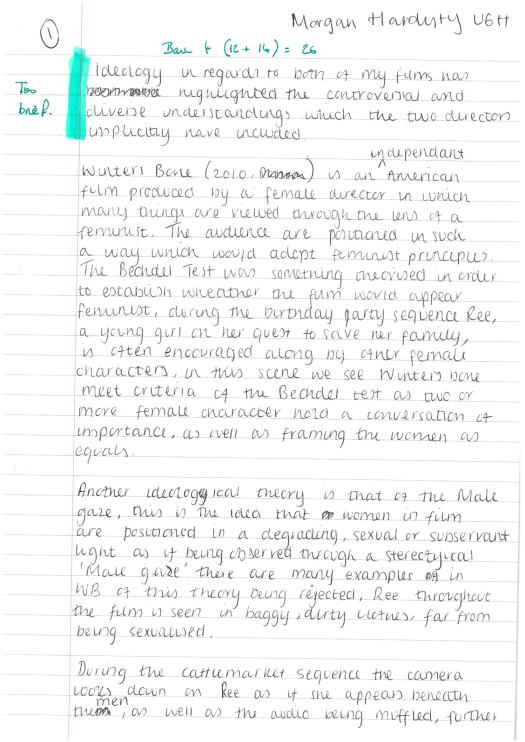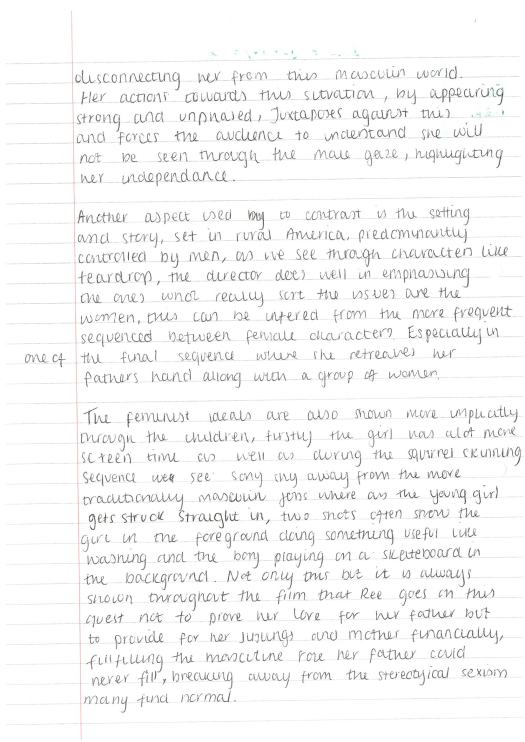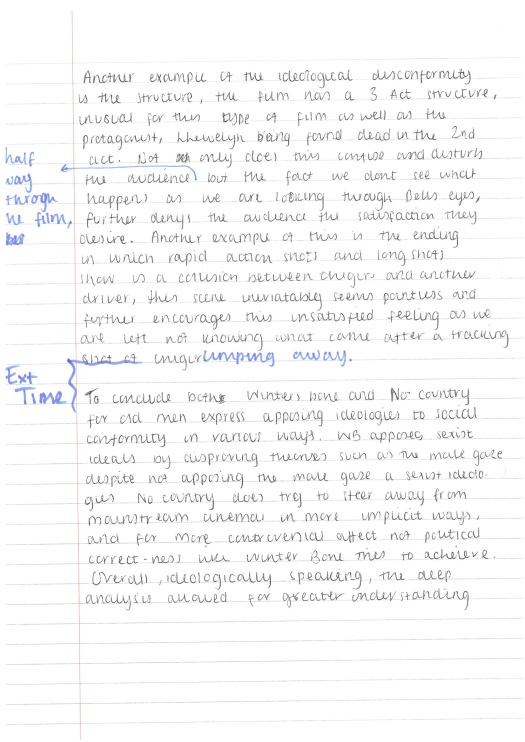All this brings us to This is England. Shane Meadows’ latest film (now available on DVD) is by far his strongest and most complex piece of work to date. Although all of his previous films have touched on elements of the director’s past, it is fair to say that this is Meadows’ most personal work. As he has said of the 80s context of the film:
As a kid growing up in Uttoxeter, Staffs, it was a time of great music, brilliant fashion and a vibrant youth culture that makes today’s kids look dull and unimaginative by comparison. It was also a time of massive unrest when British people were still prepared to fight for the stuff they believed in. My new film, This is England, is about all of these things.
The Guardian 21/04/07
The film starts with a montage of 80s imagery, everything from Roland Rat to Duran Duran, Knight Rider and the royal wedding of Charles and Diana. Also included in this is footage of Margaret Thatcher, Conservative Prime Minister of the period – whose policies and philosophies loom large in this film. The shattering of working-class communities is a common theme in Meadows work, and in this film this is implicitly seen as a result of the Thatcherite belief in individualism and the promotion of consumerism.
The backdrop of the film is the Falklands War. In 1982 Argentina invaded the small colonial outpost of the Falklands Islands in the south Atlantic. Mrs Thatcher’s response was to send a Task Force of British serviceman to fight for the retention of the Islands’ British sovereignty. Shaun, the central character, has lost his father in the conflict and this acts as a catalyst in the film for much of his behaviour. The war was fought and won quite quickly and although there was some loss of life, the victory gave a tremendous boost to the Conservatives who had been struggling with massive unemployment at home. In turn this was seen as a key factor in Mrs Thatcher’s second General Election victory a year later.
Youth cults and a sense of belonging
This is England centres on 12-year-old Shaun (an excellent performance by newcomer Thomas Turgoose) and his induction into a gang of local skinheads led by the affable Woody (Joe Gilgun). Shaun is still reeling from his father’s death, and lives with his mother on a nondescript Midlands estate. He is bullied at school for the clothes he wears and seems lonely and disaffected. That said, he isn’t afraid to stand up for himself, despite his diminutive stature. What may not be known to many younger members of the audience is the background to the skinhead movement, what they signify in the broader context of the film.
Youth cults have always been a feature of the British teenage experience. They offer a common dress sense and a shared set of attitudes and values. These cults or movements centre on music as a key defining feature and they had existed in recent British popular culture with Teddy Boys in the 1950s, Mods and Rockers in the 1960s, Punks in the 1970s and New Romantics in the 1980s. There were of course other movements that teenagers were a part of as well; and by far the most feared and perhaps misunderstood were the skinheads. In This is England, Shane Meadows, himself a former skinhead, tries to deal with these complexities.
The rise of the skins
The first wave of skinheads came to prominence in the late 1960s. They were essentially working class youngsters, who in their communities and workplaces were for the first time encountering West Indians. There was a common bond forged here with the rude boy culture of the Caribbean and this was largely based on a love of ska, soul and bluebeat music. In terms of fashion it was relatively cheap, practical and crucially very distinctive. Fred Perry T-shirts, drainpipe Levis, Harrington jackets and Doctor Martin boots were its uniform. Extreme, closely-cropped hair gave the movement its name.
Any youth cult or movement inevitably raises fears exacerbated by the media (witness last year’s tabloid outburst on Emo). Like any group of young people there were factions of skinheads who were violent – but they were easier to label. During the mid 1970s skinheads largely disappeared, only to re-emerge at the tail end of the decade. Spurred on by a new generation interested in the ska and bluebeat of the late 1960s, this new movement centred on a record label, 2-Tone, set in Coventry. Suddenly all over Britain, young people started getting their hair cut in the distinctive suedehead style and dressing much like the skinheads of ten years previously. One famous Top of the Pops in 1979, saw the appearance of no less than four bands (The Specials, The Beat, Madness, and The Selector) on 2-Tone or associated with the ska revival. Skinheads were truly back in style and part of the mainstream consciousness.
2-Tone prided itself on its multi-racial groups and its adherence to an anti-racist agenda and it also produced some fantastic music which is still highly influential today. The late 1970s also saw massive unemployment and social disorder with riots in many of Britain’s cities. It was against this backdrop that Margaret Thatcher was elected in May 1979. At the same time far-right political parties like the National Front, who blamed the economic difficulties on immigrants, grew in popularity.
Woody in This is England represents the 2-Tone model of the skinhead in many respects. One of the gang, Milky (played by Meadows’ regular Andrew Shim) is from a Jamaican background and there is a clear love of black culture shown in the mise-en-scène, for example posters celebrating ska music adorn the walls of Woody’s girlfriend’s bedroom. The use of music in the film initially harks back to the original artists from the West Indies and it is wonderful. There is a lovely slow motion Reservoir Dogs moment set to Toots and the Maytals’ Louie Louie, where the gang emerges and walks down the street. It sums up the early feeling of the film as one of celebration, of Shaun finding something or somebody to help him. We see the gang dressing up in costume and vandalising some empty houses, kicking football and going swimming. Shaun is introduced to parties and his first kiss with Boy George look-alike Smell. The café and square where the gang hang out is lovingly recreated. Woody is a very much a surrogate father for Shaun – looking after him and encouraging him to become part of the gang by shedding his hideous corduroy flares and animal jumpers for a Ben Sherman shirt and Levis strides. The transformation is complete when Lol (Vicky McClure) shaves Shaun’s head. But there are dark clouds on the horizon.
Combo and the dark side
The emergence of Combo (an incendiary performance by Stephen Graham) in the film signifies a shift in the mood and tone of the narrative. Combo has been in prison for three years for an unspecified crime, and on his release sets about regaining the gang from his old friend Woody.
Combo is a racist, schooled in the politics of fear and ignorance. It is indicated, by some clever cutaway shots of Lol and the rest of the gang, that Combo has always been like this, that his radical and abhorrent views are not just the result of his jail sentence. He sees the economic problems as largely being the fault of ethnic minorities. His rhetoric challenges the group to either fight or to stay with the more civil Woody. For some members like Milky and Lol it is an easy choice to make; but for the weaker, more vulnerable skinheads it is much more difficult. Impressed by Combo’s ugly, rousing speech, Shaun chooses to stay with him and so begins a new chapter in the film.
What is clear to see here is that Meadows never glorifies the actions of Combo and his new acolytes. Their intimidation of young Bengali boys and Asian shopkeepers is a far cry from Combo’s ‘tactics’. In one interesting and unsettling scene, we see Combo driving his new found gang to a country pub (complete with L plates), where they are addressed by National Front members. The respectable appearance of these so-called politicians contrasts sharply with that of their audience. For Combo they are providing a voice for him and his beliefs, as wrong as they might be.
Shane Meadows has suggested in a number of interviews that Combo’s racist ideals are rooted in a lack of identity and uncertainty of what being English is all about. The immigrant communities had strong identities, a real sense of community and a clear culture as evidenced in areas such as music. Combo it seems lacks these core values and it is his xenophobic stance that is totally at odds with skinheads’ multicultural roots. The skinhead movement did suffer from a massive upsurge in racism in the early 1980s – the ramifications of this are still seen today with a number of neo-Nazi skinhead groups operating in Europe. That said Meadows does give a great deal of complexity to Combo, rather than just presenting him as a raging sociopath. There are indications of a lost past, a broken family, a missing father. He sees in Shaun a younger, purer version of himself. He is a very different patriarch to Woody, who echoes Darcy in 24.7. He is much closer to Morrell (Romeo Brass) and Sonny (Dead Man’s Shoes) in terms of temperament and their relationships with younger characters. His rejection by Lol is also pivotal in understanding his catalytic final action.
However, what is central in This is England is Shaun’s development. It is a tough rite of passage for him as he searches for a sense of belonging and very possibly a new strong father figure. In the final shots of the film, the Cross of St George flag (a present from Combo) is used to excellent effect, as Shaun throws the flag into the sea. It raises fascinating questions beyond the narrative about where he will go next and what exactly he is rejecting.
Shane Meadows an auteur are his use of occasional comedy, even during serious film ‘This is England’ there are moments of comedic value, such as the scene where Shaun and his friends hide to scare Gadget as he approaches them, and when Shaun and his mother go shoe shopping and she tries to trick him into buying ‘uncool’ shoes with the shop assistant. These scene I felt was rather light hearted despite the situation of the vandalism they were committing in scaring Gadget, and its different to other films of this genre because films such as ‘Fish Tank’ are very much intense throughout, therefore I think occasional comedy could be a recognisable factor for Shane Meadows.
Another point is his storytelling. When I first watched ‘This is England’ it seemed very simple yet effective, however on the second viewing I discovered it was a lot more of a real story than I first thought, as it really felt like the story wasn’t about representing a whole group of people but specifically Shaun. As you see the moments with his mother doing average things such as shoe shopping and eating in cafes that make the character so likable despite his flaws. This I feel could be another point because in Meadows work he really represents the characters themselves, and tells in depth stories.
Shane Meadows also often uses the same actors in his films such as Thomas Turgoose who plays Shaun, he was 12 when he featured in This is England as his narratives often focus on young children being pushed into the wrong crowds. He also uses Vick McClure and Stephen Graham. Meadows often creates films that link to his own personal life which makes him more of an auteur because that aspect of film is familiar with him.
His most common style is Social realism in british society. With many of the films being set in Northern England about working class people with heavy accents and in some ways unusual lifestyles but in other ways extremely common and basic, (for example, lol has an unusual lifestyle as a skinhead but a common lifestyle by working as a factory worker and then in the series a diner lady). The protagonists are usually shown as young men which have built up anger that is expressed throughout the film. However the genre itself would probably be classed as hyper-realistic which is then exagerated for comedic effect.
This realist genre is upholded through cinematography and the use of documentary-like, hangheld shot which make the audience feel more submerged within the reality of the film.
Sound is used throughout the film in a number of ways specifically the non-diegetic scores, some complied scores are to submerge the audience within the time period and the world of the characters by playing rastafarian music which the skinheads would have listen to at the time. Meadows also uses the same composed orchestral score to create enhanced emotional effect during difficult or montage scenes.
Editing is used to create montages throughout, specifically at the start and the end. This is used to enhance the emotions of the scene whilst also giving reasonable context that sets the audience within the time period (the 80’s)
Mise-en-scene is used to create a realistic setting for the 80’s time frame. As well as having significant effect into the skinhead look aswell as the story that is told. As well a the performance which is hyper realistic. This only relates to the skinheads and is set in place in order to create reaction from the audience for their own pleasure.





